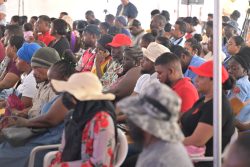Story and photos by Shabna Ullah
The village of Crabwood Creek (CWC), Corentyne which has a population of 7,000 is said to have seen significant business developments over the years with many residents engaged in trading in neighbouring Suriname.
It is located two villages away from Moleson Creek – the end of the Corentyne coast – which is home to the Guyana-Suriname Ferry Stelling. Persons from all over the country would go to the stelling to cross with the MV Kanawaima which departs at 9 am and 1 pm daily. But many others, especially traders from the area, prefer to use the ‘backtrack crossing’ at Springlands because it is faster and allows them to conduct their businesses and return in one day. They trade in items such as electrical appliances, clothing, footwear, groceries, confectionery pharmaceu-tical products, chemicals and even vehicles.
The village has 11 grants: 1804, 1806, 1805, 1803, 1780, 1802, 2767, 2209, 1651, 1778 and 1779, in that sequence.
It has several major businesses including popular ones like Ganesh Singh & Brothers, H N Sugrim which offers sand and quarry services and R. Prasad (Mary), a gas station, lumber yard, agricultural spares and cane farm. The village has about 10 sawmills, general stores, supermarkets, mechanical workshops, a hardware store, a grocery, restaurants and a paddy drying floor at Grant 1779 that the rice farmers use.
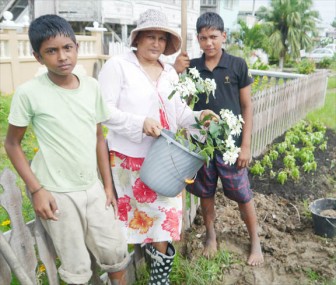
Residents of the predominantly East Indian community worship at the mosque, three mandirs and the four churches in the village.
The Crabwood/Moleson Creek Neighbourhood Democratic Council (NDC) which houses the sanitary department and library, health centre, nursery school and a branch of the primary school are located next to each other at Grant 1802. The main primary school can be found in a side street on the other side of the road.
While the rainy weather probably kept most of the women indoors, Shauna Basdeo was busy planting flowers on the parapet in front of her home. Two young relatives were helping her. She resides in Minnesota in the US and would return to the village annually on vacation. It is always “nice and relaxing to be home,” she said, “I enjoy the sea breeze.” But she was “afraid of bandits. I would read about robbery all the time. Many people want to return but they are scared.”
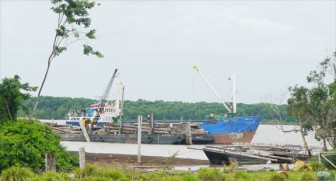
Chairman of the NDC, Teerbhawandat Arjune said CWC is primarily a farming area and is one of the most self-sufficient in the country. Residents are engaged in large-scale rice, cane, cash-crop and provision farming.
Many people are employed at the Skeldon Sugar Estate while others have jobs at the NDC, schools, farms and other business places in the area. They access health care from the health centre as well as the Skeldon Hospital.
Arjune said the NDC would be rehabilitating streets and noted that flooding is not an issue in the area because there is gravity flow. Flooding would only occur if the sluice door is shut when there is heavy rainfall. There is also a $20M kiln-drying facility that was established in November 2010 by the Guyana Forestry Commission and the Upper Corentyne Kiln Drying Association.

A resident said the sawmillers had asked for the facility to kiln-dry their wood but so far they have never used it. He learnt from a sawmiller that “during the trial run of the facility they lost fifty per cent of the quality of the wood; it went to second quality.” This newspaper spoke to a sawmiller who confirmed that this was one of the reasons for them not utilizing it.
Erosion
Residents were concerned about the erosion taking place in the village and said a section of the burial ground at Grant 1802 had already been washed away. Large sections from Grant 1779 and 1803 have also eroded and residents were lucky to be saved from further erosion because a businessman who is establishing a new sawmill is undertaking revetment work.
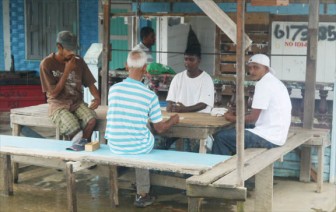
This newspaper learnt too that the Ministry of Public Works has commenced sea defence work at Grant 1806.
Residents pointed out that there is no garbage disposal system and they “don’t know where to take the garbage. The authorities should get vehicles to pick them up.”
They noted too that some of the streets that were recently
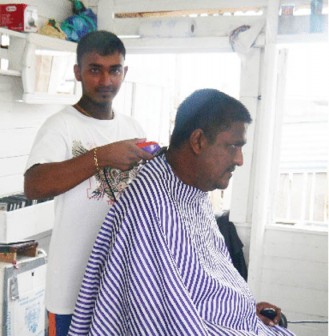
repaired were already in a deplorable condition.
According to them, the streets deteriorated quickly because they were not done up to standard. They lamented that when it rains vehicles would splash water all over from the potholes. Drivers also have to use the road shoulders thus causing further damage.
Arjune told this newspaper when contacted that residents who use heavy-duty vehicles are responsible for the damage. The street was built to accommodate

five-tonne vehicles but vehicles up to 10 tonnes would use it.
He blamed the residents too for allowing the streets to be damaged by removing the barriers that were erected to prevent large vehicles from gaining access.
This newspaper was told too that the Guyana Water Inc also contributed to the deterioration of the roads, “because when they dig to install pipelines [they] would not fix it properly and cause leakage.”
Social issues
While there are a lot of positive things taking place in CWC, there are also a lot of social issues with young people being involved in drugs and alcohol. This would lead to petty crimes and fights, especially at wedding houses.
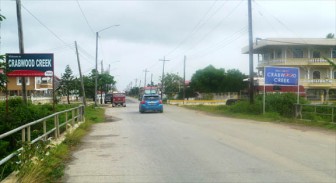
A resident said that although the police would arrest the drug users they were not solving the problem and that is to “go after the drug peddlers and drug lords. The police are well aware of these people but they do not raid their homes because of bribery… They are not concerned.” The resident said too that “good youths would be influenced to try the drugs then get addicted and then the problem would start.”
Tapirs are a common mode of transportation in CWC and Ramzan Alli, a mechanic was the first person to have fabricated them. He was “finished with tapir” though because of “too many substitute parts that are available, that can cause serious accident.” The vehicles are still being made, mostly by the youths that he had trained.
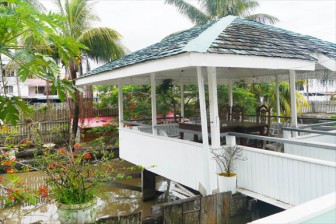
Alli still repairs the tapirs but concentrates more on other classes of vehicle. At the time he was busy fixing a BMW van that had crashed. He also proudly displayed ‘before and after’ pictures of vehicles that had been involved in serious accidents that he had restored.
This newspaper stopped at a welding shop belonging to Wazir Mohamed at Grant 1806 while it was raining slightly. He was dealing with two customers at the time while two of his young workers were being trained.
A welder for 10 years ago, he was trained with one of the most popular machine shops, Western Engineering at Skeldon. The owner of that business, Jamna Persaud passed away after this interview at the age of 95.
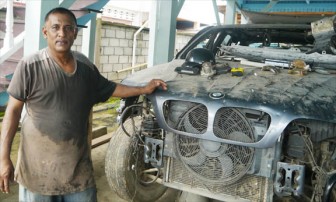
Up to the time of his death he was still said to be working. Mohamed moved from Georgetown 18 years ago to live at his grandparents’ house. He loves CWC which he said was quiet and “far better than Georgetown.”
Ganesh Singh & Brothers who operate the Cortours Eco-Tourist Resort and a logging business from Grant 1651 export to China, India and Trinidad, and are also looking at a German market. The company runs a guest house at Orealla, located 50 miles from CWC and a resort at Cow Falls 150 miles away, and another 100 miles further they have the Wanatobo resort.
Richie Singh told the Sunday Stabroek that despite the long distance “the journey is worth it; it is the most spectacular place in the country. It has the most beautiful waterfalls.” Tourists would visit their offices at CWC and in Suriname to make reservations and would “enjoy hours of fishing, bird watching and wild life. This is nature at its best!”
Dominoes
A group of youths were busy playing dominoes with 94-year-old Karim Bacchus in front of a barber shop operated by Suraj Hemnarine. Soon only one of the youths, Kishan Hackim remained playing. This newspaper looked on and was speaking to Bacchus while six games were being played. But he was not distracted and won all of the games. His opponent was not the least discouraged and didn’t mind losing to the old man because he was “learning from him all the time.”
Bacchus used to ride his bicycle every day around the village to go to the shops and other places until it was stolen about two years ago. He recalled that in his younger days he moved around with his donkey cart to go to worship at the mosque at No 78 Village and to other places. That was the only mosque in the area but now there are many more nearby.
Neighbours “used to live nice; when a woman get baby everybody would visit and take something. People were poor but they were not selfish.” Invitations for weddings were done by means of uncooked rice stained with dye.
The indentured labourers who came from India to work on the plantation were given land by the estate to plant rice.
Bacchus worked at the Elijah & Mary Sugar Estate at Springlands and lived in a mud house with a thatched roof that was later replaced with zinc sheets.
There are lots of changes in the village and the most significant one for Bacchus is that the beach was far out and people used to play games on the sand.” He was referring to the “sea taking over village” through erosion.
Former mayor
Sawmill owner, Roy Baijnauth of No 79 Village who served as the mayor of Corriverton for 17 years was busy in his office when this newspaper dropped in. He feels there could have been more development in CWC if businesspersons were willing to work together. He was recently removed as the mayor and an Interim Management Committee (IMC) installed. He had claimed that he was not informed about the IMC.
Baijnauth who was not willing to say too much on the issue, said that although he runs a business he still found time to serve the people for free. He was happy that “we have done a great deal because when we went in there nothing was built, nothing.”
The former mayor said too that he highlighted the issue in the press because he “wanted to send a message to the people up there, let them realize that they have done something wrong to us. Even to the good
residents in the town, they have wronged them.” With emotion in his voice, the former mayor said “they just can’t bulldoze people who have served them so long honestly, dedicated themselves to you… And that hurt a lot. I thought they would have come out or even if they had written a letter and say we thank you all for your service and all…”
In the early ’40s to the late ’60s his family owned a rice mill at the end of Corriverton and “we were dealing with farmers from Crabwood Creek… At the time money had value and everybody used to make a good living.”
After the rice industry was not so viable many persons stopped planting rice and went into cash crop farming.
He recalled that “while people stopped farming the trading became large scale.” Many persons started to smuggle contraband items especially foodstuff that cause them to “live at the standard they are in right now… they made a lot of money.” Some persons are still engaged in trading, he said, while others have “gone back to rice” farming since 1992 when this government took office.
Baijnauth said some of the younger generation has not followed in the footsteps of the older folks to work hard and that has led to broken marriages and to many of them committing suicide. He said “people can live happy in Crabwood Creek” because of the jobs available at the various businesses.







